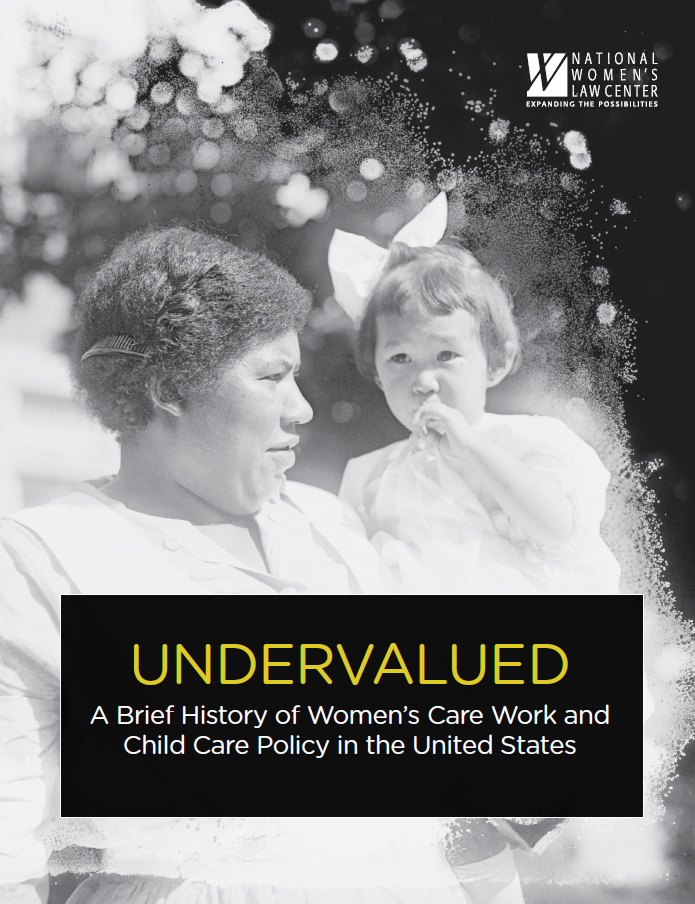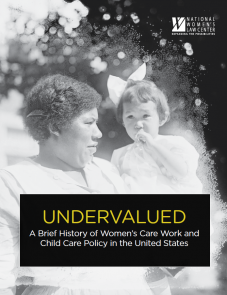Abortion rights, women of color, and LGBTQI+ people are under attack. Pledge to join us in fighting for gender justice.

 Women’s work. Child care. For much of our nation’s history, the two have been nearly synonymous. Yet the stories diverge along racial lines. Until at least the latter half of the 20th century, few types of work beyond unpaid care for their own children at home were viewed as socially acceptable for white women. Women of color, however, were employed—or enslaved—in domestic work, including child care for other families’ children, for centuries.
Women’s work. Child care. For much of our nation’s history, the two have been nearly synonymous. Yet the stories diverge along racial lines. Until at least the latter half of the 20th century, few types of work beyond unpaid care for their own children at home were viewed as socially acceptable for white women. Women of color, however, were employed—or enslaved—in domestic work, including child care for other families’ children, for centuries.
Today, more women are in the labor force than ever before, in a range of jobs far wider than their grandmothers might have imagined. Yet in the U.S., child care is largely still viewed as women’s work and—in contrast to nearly every other developed nation in the world—as a private responsibility rather than a public good. Millions of parents find the cost of high-quality child care out of reach, even as millions of women, especially women of color, employed in the child care industry are living just above, or even below, the poverty line. Despite considerable progress, women’s choices around caregiving and employment remain constrained—not only by cultural norms, but also by public policy.
Undervalued: A Brief History of Women’s Care Work and Child Care Policy in the United States provides a brief overview of the state of child care in the United States and traces how—through the persistent denigration of the care work performed by women, especially women of color, and resulting public policy decisions—we arrived at this point. And it identifies the policy solutions that are needed to move toward a system that works for both families and child care providers.

